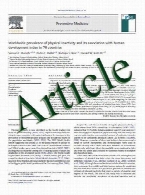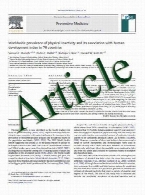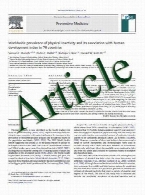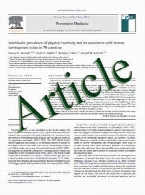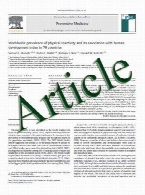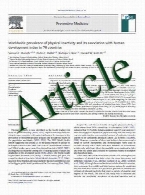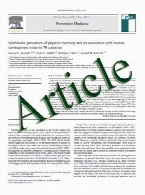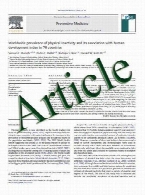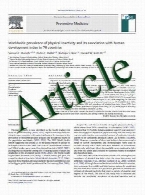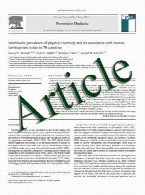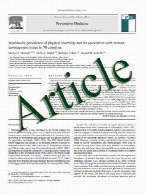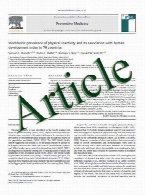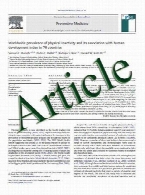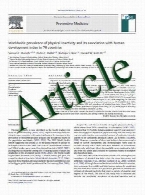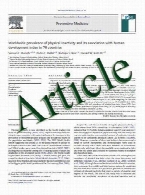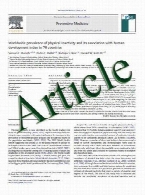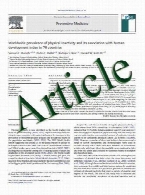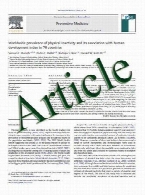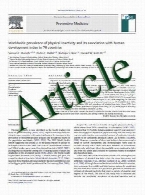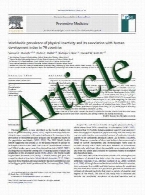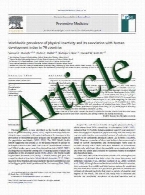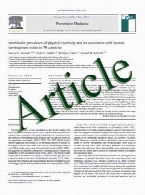

Breast cancer prognostic marker ...
Historically, new prognostic markers for breast cancer were assessed separately and sequentially in a series of studies, often with considerable cos ...
Dual targeting of EphA2 and ER ...
Overexpression and altered function of EphA2 receptor tyrosine kinase are critical in the progression of breast cancer and provide a target for brea ...
Zoledronic acid prevents bone l ...
To determine whether zoledronic acid (ZA) can prevent bone loss in premenopausal women undergoing adjuvant chemotherapy for breast cancer. In this r ...
Topoisomerase II alpha protein ...
Overexpression of topoisomerase II protein (topo 2a) is postulated to be more closely associated with responsiveness to anthracycline-containing che ...
Monitoring of neoadjuvant chemo ...
We prospectively investigated using advanced magnetic resonance imaging (MRI) and positron emission tomography/computed tomography (PET/CT) to ident ...
Phase I/II study of sorafenib w ...
We evaluated the use of sorafenib to overcome resistance to aromatase inhibitors (AIs) in patients with metastatic breast cancer who had disease rec ...
Impact of treatment characteris ...
Pathological complete response (pCR) to neoadjuvant treatment correlates with outcome in breast cancer. We determined whether characteristics of neo ...
Increased overall survival inde ...
Recent studies have reported the potential clinical utility for metastatic breast cancer (MBC) patients of continuing trastuzumab beyond progression ...
Variation in genes coding for A ...
AMP-activated protein kinase (AMPK) is an energy sensing/signalling intracellular protein which is activated by an increase in the cellular AMP:ATP ...
Breast cancer screening and eth ...
Ethnic and racial minority women within the U.S. are less likely to use breast cancer screening (BCS) procedures than non-Latina White women, and ar ...
Early discontinuation and non-a ...
Despite the benefit of adjuvant hormonal therapy (HT) on mortality among women with breast cancer (BC), many women are non-adherent with its use. We ...
Mutation analysis of BRIP1 in m ...
Breast cancer (BC) in men is rare compared with BC in women, but its incidence is increasing along with attention toward this uncommon disease. Alth ...
The h index and the identificat ...
The h index is used to assess an individual’s contribution to the literature. This metric should not be employed to compare individuals across resea ...
Polymorphic variants in TSC1 an ...
TSC1 acts coordinately with TSC2 in a complex to inhibit mTOR, an emerging therapeutic target and known promoter of cell growth and cell cycle progr ...
Presence of MMTV-like env gene ...
Park et al. 2010 (No evidence of MMTV-like env sequences in specimens from the Australian Breast Cancer Family Study, Breast Cancer Research and Tre ...
Neoadjuvant chemotherapy in ER+ ...
A pathological complete remission (pCR) is rarely achieved by neoadjuvant chemotherapy in estrogen receptor-positive (ER?) HER2-negative (HER2-) tum ...
Oncological and cosmetic outcom ...
An inappropriate skin incision on the breast reduces the cosmetic benefit of breast-conserving surgery (BCS). To improve the cosmetic outcome, we ha ...
Post-lumpectomy intracavitary r ...
Liposomes are recognized drug delivery systems with tumor-targeting capability. In addition, therapeutic or diagnostic radionuclides can be efficien ...
Prediction of lymph node involv ...
The aim of this study was to investigate whether lymph node involvement in breast cancer is influenced by gene or miRNA expression of the primary tu ...
Predictors of timing of adjuvan ...
Adherence to consensus guidelines for cancer care may vary widely across health care settings and contribute to differences in cancer outcomes. For ...
The effect of system-level acce ...
Treatment decisions associated with ductal carcinoma in situ (DCIS), including the decision to undergo breast reconstruction, may be more problemati ...
Prevalence of BRCA1/2 mutations ...
In order to adequately evaluate the clinical relevance of genetic testing in sporadic breast and ovarian cancer patients, we offered comprehensive B ...
The p160 ER co-regulators predi ...
The SRC family of ER co-regulators are frequently overexpressed in breast cancer. Overexpression of AIB1 appears to be linked to hormone resistance ...
Cancer predisposing BARD1 mutat ...
The breast cancer susceptibility gene BARD1 (BRCA1-associated RING domain protein, MIM# 601593) acts with BRCA1 in DNA double-strand break (DSB) re ...
Lack of efficacy to systemic ch ...
Metaplastic carcinoma of the breast (MCB) is a rare subtype of breast cancer. Anecdotal reports are available regarding its response to systemic che ...

